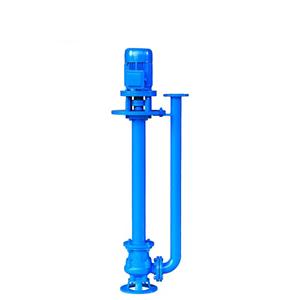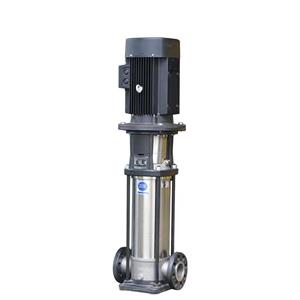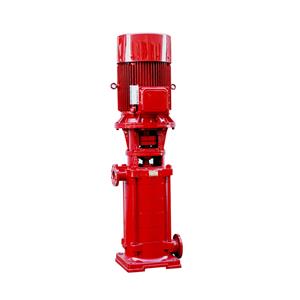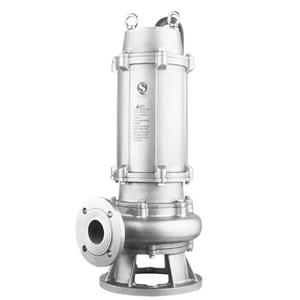Insights on Maintaining Chemical Centrifugal Pumps
Insights on Maintaining Chemical Centrifugal Pumps
Centrifugal pumps are integral to chemical processes, transporting fluids ranging from water to highly corrosive chemicals. Proper maintenance of these pumps is essential not only to ensure optimal performance but also to extend their lifespan and reduce operational costs. Given that pumps are critical to maintaining the efficiency and continuity of operations in the chemical industry, regular and systematic maintenance is key to preventing unexpected downtime, improving energy efficiency, and minimizing repair costs. In this article, we share practical insights and tips on maintaining chemical centrifugal pumps based on industry best practices.
1. Understand the Pump’s Operating Conditions
The foundation of effective pump maintenance is understanding its operating environment and conditions. Chemical centrifugal pumps often work in challenging settings, such as handling highly corrosive, abrasive, or viscous fluids at varying temperatures and pressures. Therefore, the first step in a maintenance program is to thoroughly understand:
Fluid properties: Is the fluid corrosive, abrasive, or viscous? The type of fluid impacts how much wear and tear occurs on components like the impeller, seals, and casing.
Operating pressure and temperature: Operating conditions such as temperature and pressure affect material selection for pump components. Ensure that the materials used in the pump can withstand the specific pressures and temperatures at which the pump operates.
System configuration: Consider the layout of the piping, the type of flow (continuous or intermittent), and whether there are any components like filters or valves that could affect the performance of the pump.
2. Regularly Inspect and Monitor Pump Performance
Regular inspections and performance monitoring are essential to detect early signs of wear or malfunction before they escalate into major issues. This can be achieved through both visual inspections and the use of diagnostic tools:
Visual Inspections: Regularly check for visible signs of wear or damage, such as leaks, unusual vibrations, or misalignment. Look for worn seals, cracks in the casing, and rust on external components, especially if the pump is handling aggressive chemicals.
Vibration Monitoring: Excessive vibrations often signal misalignment, imbalance, or wear on bearings. Installing vibration sensors on pumps can help identify irregularities early on, allowing you to take corrective action before these issues lead to failure.
Temperature Monitoring: Overheating can cause premature failure of seals, bearings, and gaskets. Monitor the operating temperature of the pump and its components to detect potential overheating conditions, which could indicate problems such as insufficient lubrication or excessive friction.
Flow and Pressure Monitoring: Measure flow rates and pressures periodically to ensure that the pump is operating within its design parameters. A significant deviation from expected performance could indicate internal wear or clogging, affecting efficiency and increasing energy consumption.
3. Cleaning and Lubrication of Components
Chemical centrifugal pumps are often exposed to harsh chemicals and abrasive materials, which can lead to clogging, erosion, and corrosion. To minimize these effects and maintain optimal performance, cleaning and lubrication are crucial:
Impeller Cleaning: The impeller is the heart of the centrifugal pump, and over time, it may accumulate deposits from the fluid being pumped, especially in systems handling slurries or viscous liquids. Regularly clean the impeller to prevent buildup, which can reduce flow and cause inefficiencies.
Seal Maintenance: Seals are vulnerable to wear, especially when handling corrosive or abrasive fluids. Clean and inspect mechanical seals periodically to ensure they are in good condition and replace them when necessary. Leaking seals can lead to loss of pressure and contamination of the surrounding environment.
Bearings and Lubrication: Bearings should be checked for smooth operation and proper lubrication. Lack of lubrication or dirty lubricants can lead to overheating, wear, and eventual failure. Use the correct type of lubricant based on the pump’s design and the fluid’s temperature range.
4. Monitoring and Preventing Cavitation
Cavitation, which occurs when the pressure in the pump drops below the vapor pressure of the fluid, is a significant issue that can lead to severe damage and reduced efficiency. It results in the formation of vapor bubbles within the pump that collapse violently, causing shockwaves that can erode impellers and other internal components.
To prevent cavitation:
Maintain adequate NPSH (Net Positive Suction Head): Ensure that the suction pressure is high enough to prevent cavitation. If the NPSH available is lower than the NPSH required by the pump, cavitation will occur. This can be achieved by optimizing suction piping, maintaining a higher liquid level in the suction tank, and reducing pipe length and fittings.
Keep flow rates steady: Rapid changes in flow rates can induce cavitation. Design the system to maintain a consistent flow, avoiding frequent starts and stops of the pump.
Check the impeller for erosion: Regularly inspect the impeller for signs of cavitation damage. If cavitation is detected, investigate the cause and take corrective measures, such as adjusting the system or changing the pump’s operating conditions.
5. Regularly Check and Adjust Alignment
Misalignment of the pump shaft or motor can cause uneven wear on bearings, increase vibration, and decrease the overall efficiency of the pump. Misalignment is often the result of improper installation or wear over time. To prevent alignment issues:
Check alignment regularly: Use precision tools to measure shaft alignment and correct any misalignment. This should be done during routine maintenance checks or after any changes in the system, such as motor replacement.
Monitor vibration: Excessive vibration can indicate misalignment. If vibration exceeds acceptable levels, it is essential to realign the pump to avoid further damage to the pump components.
6. Control System and Flow Adjustments
Many chemical centrifugal pumps are equipped with automated control systems that monitor and adjust variables such as flow rate and pressure. These systems help optimize pump performance and can alert operators to potential issues.
Adjust speed for varying flow demands: If the pump is equipped with a Variable Frequency Drive (VFD), it allows operators to adjust the speed of the pump to match fluctuating flow rates. This reduces energy consumption and minimizes wear on the pump when demand is low.
Adjust for process changes: In chemical processes, flow requirements and fluid properties can change over time. Regularly adjust the control system to match the current operating conditions and ensure the pump operates within its optimal efficiency range.
7. Keep an Accurate Maintenance Log
A well-documented maintenance log is crucial for tracking the pump’s performance and condition over time. This log should include:
Inspection details: Record the findings from regular inspections, including the condition of seals, impellers, and bearings.
Maintenance actions taken: Log any repairs, part replacements, or adjustments made during the maintenance process.
Operating data: Track performance data such as flow rate, pressure, temperature, and vibration levels. This helps identify trends that could signal potential issues in the future.
8. Train Operators and Maintenance Personnel
The success of a pump maintenance program relies heavily on well-trained personnel. Ensure that operators and maintenance staff are familiar with the pump’s operation, common failure modes, and best practices for maintenance. Ongoing training and familiarization with pump manuals and manufacturer guidelines can prevent errors and improve overall maintenance efficiency.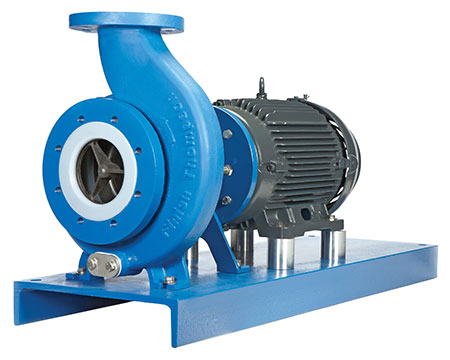
Conclusion
Maintaining chemical centrifugal pumps requires a proactive, systematic approach that combines regular inspections, cleaning, lubrication, and monitoring. Understanding the pump's operating conditions, monitoring key parameters like flow rate and vibration, and addressing common issues like cavitation and misalignment can help maintain optimal performance. By adopting a well-rounded maintenance program, chemical plants can maximize pump efficiency, reduce energy consumption, extend pump lifespan, and minimize costly downtime. With these best practices, chemical centrifugal pumps will continue to perform reliably, ensuring smooth operations in even the most challenging environments.

